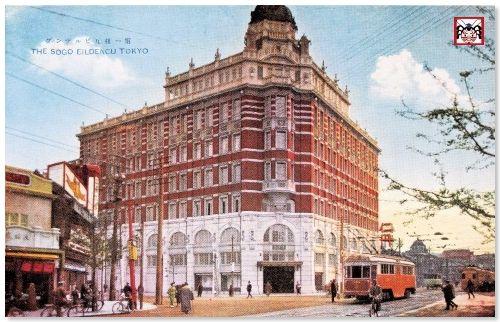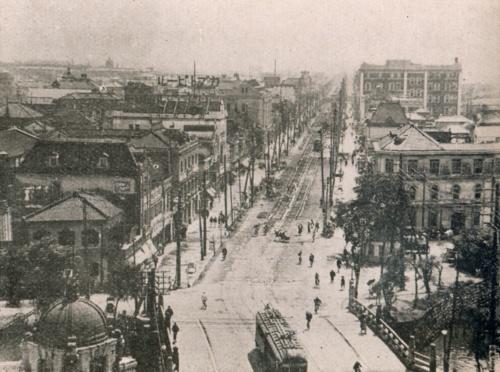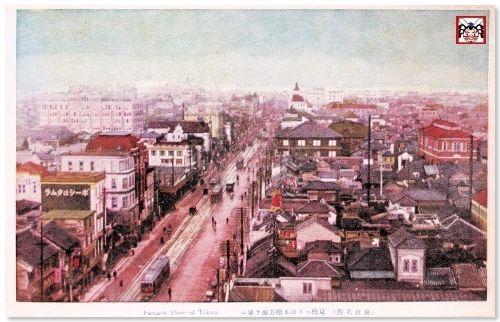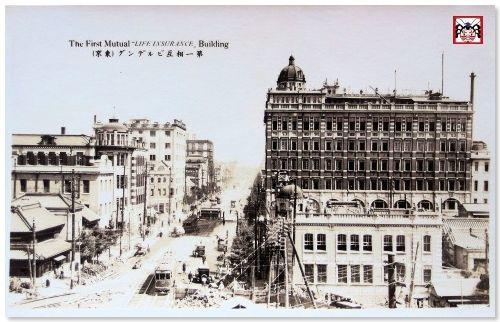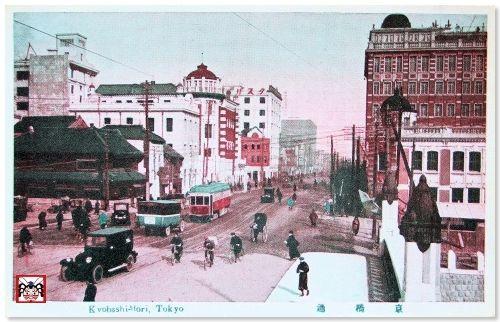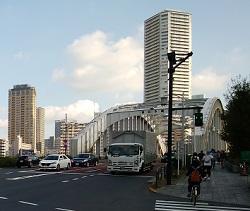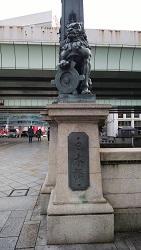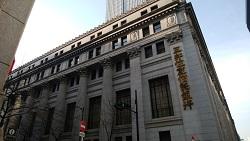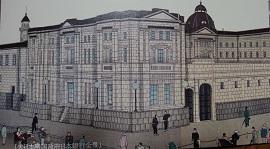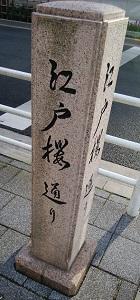This is rosemary sea, where we cover "gifts and enjoy yourself" with tutorials.
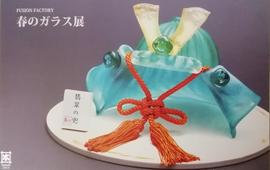
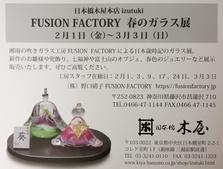
The long-established knives store Nihonbashi Kiya Main Store and Gallery izutuki are holding the "FUSION FACTORY Spring Glass Exhibition" from February 1st (Fri) to March 3rd (Sun).
FUSION FACTORY's glass exhibition was held at the same time last year and in August last year, and this time we have a lot of wonderful glass works.
New Hina doll, helmet decorations, objects from Seven Lucky Gods and Mount Fuji, and spring jewelry are exhibited and sold.
Click here for the "FUSION FACTORY Summer Glass Exhibition" held last August.
⇒ /archive/2018/08/post-5486.html
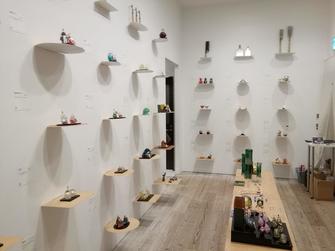
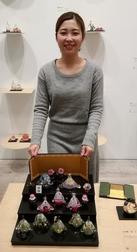
We interviewed Emi Shimodaira (Megumi Shimodaira) of Noguchi Glass Fusion Factory Sales / Public Relations Co., Ltd.
At the same time, I was taken care of by Kaneko manager of Kiya Nihonbashi Head Office.
Then I would like to introduce some items. First of all, from the peach festival.
All prices are tax-included. All images can be enlarged by clicks.
Also, the inside of "" is Mr. Shimohira's words.
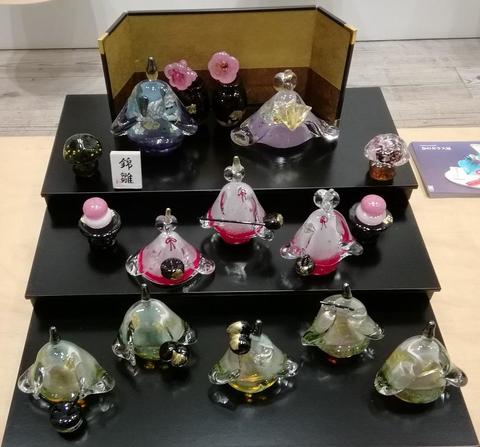
<Nishiki Hina> 270,000 yen (Usuhana Sakura) Three-stage decoration set
Hina doll glass, three-tiered decorations, gorgeous.
In fact, it has a pair of flowers and snow caves and a red cloth.
"Other than the folding screen, you can wash with water. You can put it in a box neatly.
You can also choose a folding screen.
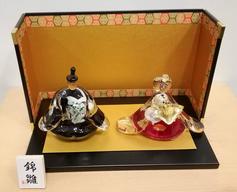
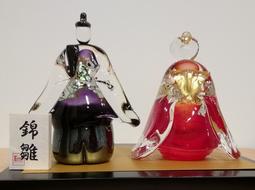
Left: <Nishiki Hina> 54,000 yen of red smell (sitting)
Right: <Nishiki Hina> Nishikidate (Tachi) 32,400 yen
Nishiki, it is a woven fabric that represents a splendid pattern in many colors. It's Hina doll with a vivid dress.
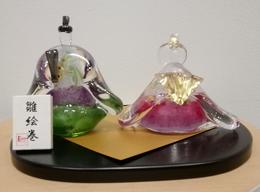
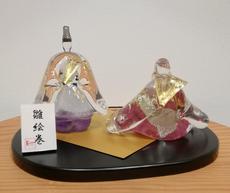
Left: <Hina picture scroll> Aoi 27,000 yen
Right: <Hina picture scroll> Cherry blossoms 27,000 yen
Male chicks and female chicks nestled in the elegant story landscape.
"It's the most popular.
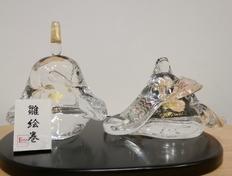
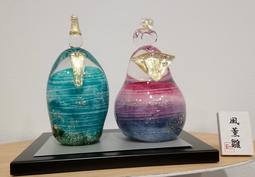
Left: <Hina picture scroll> Hanayoi (Hanayoi) 21,600 yen
Two people enjoy watching the cherry blossoms at night.
Right: Kaoru Kaze Hina (Fukabina) 21,600 yen
Hina doll's warm and gentle winds carry flowers and young leaves, making you feel the coming of spring.

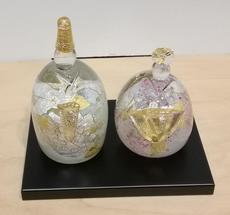
Left: Ryusaibina 12,960 yen
Hina doll colors vivid colors with flow lines.
"It's the newest Hina doll."
Right: Hakubina 12,960 yen
"There are currently a total of six writers, including four women, including the president, and two men.
There are rules that are easy to understand, and that the atmosphere does not become strange.
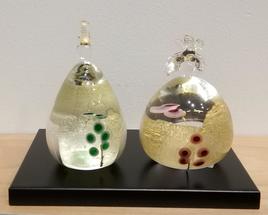
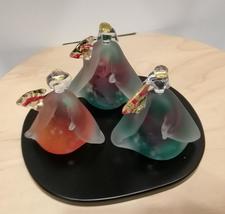
Left: Ume Hina 12,960 yen
Hina doll, plum blossoms bloom.
Right: Spring: 32,400 yen
Maiko and others are dancing in connection with the seasonal atmosphere.
"I'm inspired by the dance of Kyoto."
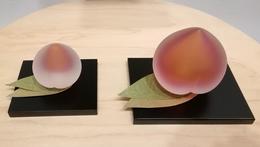
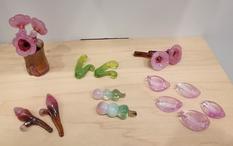
Left: Peach Decoration S 5,400 yen, M 8,640 yen
The shiny glass expresses the texture of peaches beautifully.
"This is also very popular. Some people are looking for it in the sense of protection against misfortune amulet."
Right: Peach flower decoration 12,960 yen Seasonal chopstick rest Hayawarabi 1,080 yen, peach flower 1,620 yen, cherry blossom petals 804 yen, cherry blossom bud 1,296 yen, cherry blossom dumpling 1,080 yen
Even if you add it to Hina doll, it will enhance the atmosphere.
"I want you to decorate it with Hina doll."
Next is the gift of the Dango Festival.
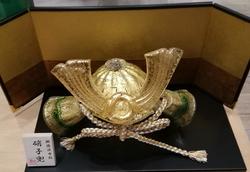
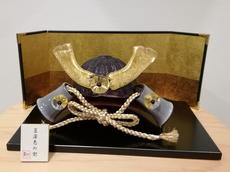
Left: <Rinpa-style water crest> Glass helmet 64,800 yen
It is inspired by Rinpa's paintings and is expressed in glass.
A golden helmet.
"The Rinpa series is both in Hina doll and in sake ware."
Right: Iris-colored helmet 54,000 yen
A helmet that reflects the color of irises on glass.
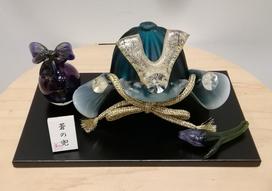
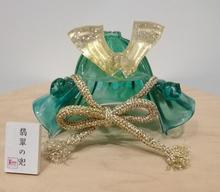
Left: Ao helmet 39,096 yen
It has a mysterious color like deep lake water.
Right: Jade helmet: 32,400 yen
A helmet of a transparent jade color.
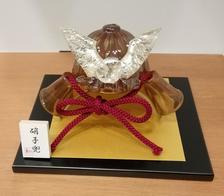
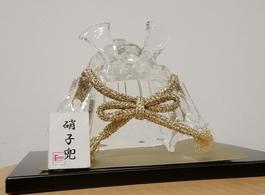
Left: <Glass helmet> Amber 21,600 yen
It is expressed in glass with a wish to grow robustly and finely.
Right: <Glass helmet> Transparent 21,600 yen
It's clear and modern.
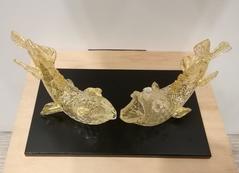
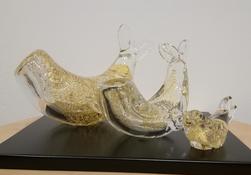
Left: Shachihoko 43,200 yen
"Ah, yes" is expressed by the expression of the left and right mouth.
"I have plenty of gold leaf. It was very popular with overseas people.
Right: Gold carp streamer 27,000 yen
It is colored with bouncing carp and gold leaf.
"It's a set of 3: dad, mom, and child."
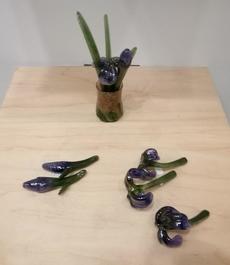
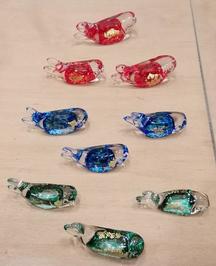
Left: Iris decoration 12,600 yen, seasonal chopstick rest flower 1,620 yen / bud 1,296 yen
Right: Chopstick rests for the season 1,620 yen each for green, red and blue
In the same way, if you attach it to the helmet, it will enhance the atmosphere.
"Even if you decorate it with the festival of Dango, as a chopstick rest."
Next is Seven Lucky Gods...
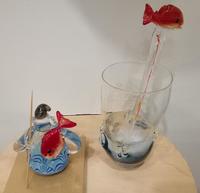
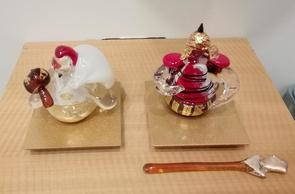
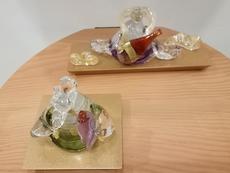
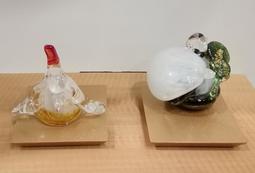
From the top to the left, Ebisu 37,800 yen, Daikokuten 37,800 yen, Vaisravana 37,800 yen, Fukurokuju 32,400 yen, Benzaiten 43,200 yen, Kotobukijin 37,800 yen, and Hotei 37,800 yen.
You can also set a glass and a Madler 21,600 yen for Ebisu at the front.
We're still there. Vases, sake ware, accessories, etc.
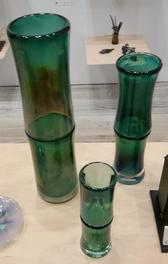
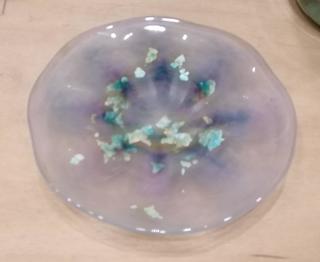
Left: Aotake S 19,440 yen, M 32,400 yen, L 64,800 yen
It is a flower vase with a beautiful green bamboo motif.
Right: FP Monet plate 5,400 yen
"FP" is the Feamas Picture Series (A famous picture series).
The inspiration from the masterpiece is expressed in color.
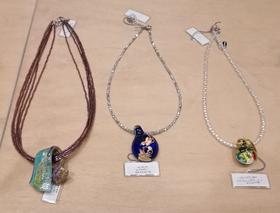
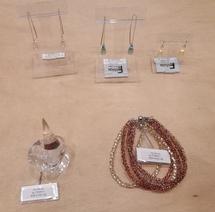
Left: Glass accessories 4,320 yen to 10,800 yen
Right: Earrings/earrings 3,240 yen to 7,560 yen
The necklace top on the left in the left image is Wakatake KIMONO.
The gorgeousness with a kimono motif is beautifully embodied with glass.
The necklace top on the right of the left image is also FP. The image of a flower garden as a masterpiece of Klimt.
Gustav Klimt was an Austrian painter around 1900 years ago.
"The necklace is inspired by spring."
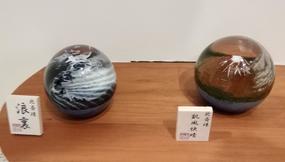
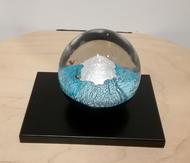
Left: 37,800 yen each for Namiura and Kaifu Kaisei
This is a three-dimensional work of Ukiyo-e. A series of "Thirty-six Views of Mount Fuji" by Katsushika Hokusai.
It is an object inspired by "Okinamiura, Kanagawa Prefecture" and "Kamikaze".
Off the coast of Kanagawa Prefecture ... A painting of high waves like swallowing Fuji.
A picture of a blue sky, white clouds, and red Fuji. Both are famous.
"It will be a work that traps Hokusai's paintings so that you can see 360 degrees. ]
Right: Fuji and couple hawk 21,600 yen
I also introduced it during the "Summer Glass Exhibition" last August.
Do you see two brown hawks flying over Fuji?
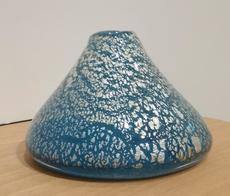
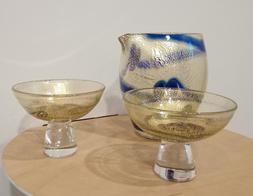
Left: 16,200 yen for Mount Fuji
It was made as a flower vase with silver foil on glass shaped like Mount Fuji.
"It's a single vase where the top of the mountain is empty."
Right: Rinpa Unkai Monshu Set (Guizaki Sake Sashi) 37,800 yen
It is inspired by Rinpa's paintings and is expressed in glass.
Do you see the flow of clouds?
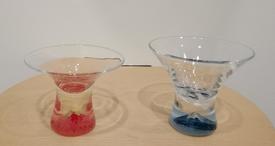
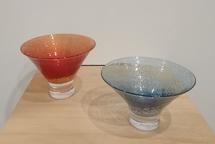
Left: 12,960 yen each for cold sake glass facing the Sea of Fuji Cloud
Right: 16,200 yen each for red and blue
It is likely to be a delicious liquor with a drink while looking at the auspicious Fuji.
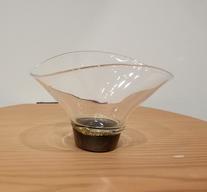
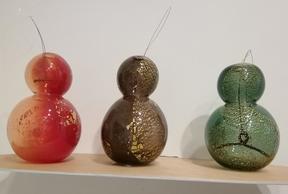
Left: Folding fan (Ogimukou) Black 4,860 yen
A fan-shaped orientation that is wide at the end. For a little dish.
"It's a container where you can serve appetizers."
Right: Glass Daruma Red, Charcoal and Green 10,800 yen
An object in the shape of an auspicious daruma.
It can be used as a single vase or hung with a special hook to decorate it.
"If you have a small size, you can do it with a burner work on hand, but (things of a certain size) the accessories are also taken from the kiln in the same way as other glass works, so the size that can be wound is larger.
It is made by winding a 1200-degree glass and cooled over a day in a kiln called a slow-cooling furnace.
If it cools rapidly, the glass will break.
Also, air may enter when it gets cold. It may expand and break.
When I opened it, the color changed. 100% is quite difficult.
One thing is free (even if there is a change)."
If it is a product that is listed in the catalog, it seems good to be finished uniformly.
Thank you very much, Mr. Shimohira.
Click here for the website of Noguchi Glass Fusion Factory.
⇒ https://fusionfactory.jp/
⇒ http://fusionfactory.shop-pro.jp/
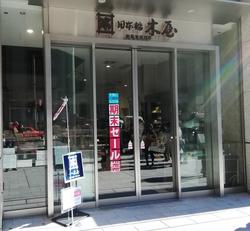
Nihonbashi Kiya
2-2-1 Nihonbashi COREDO Muromachi 1st floor
Exit A6 of Mitsukoshimae Station on the Tokyo Metro Hanzomon Line and Ginza Line.
03-3241-0110
Business hours 10:00 to 20:00
It's open except New Year's Day.
Click here for Kiya's website.
⇒ http://www.kiya-hamono.co.jp/
![]() " as "the day when a woman confesses to a man" was strong in the past, but recently it has been
" as "the day when a woman confesses to a man" was strong in the past, but recently it has been![]() s herself
s herself![]() .
.![]() .
.![]() .
.![]()
![]()
![]() .
.![]() .
.![]() .
.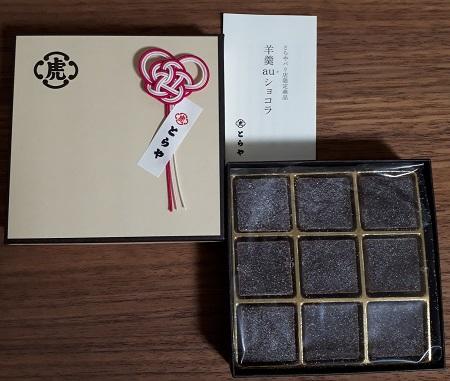

![]() on business trips (?) "Is Neuhaus, Wittamer, Del Rey, etc. famous in Belgium (all are still famous)" I had gained a shallow knowledge, but the old streets ○ province I met in Belgium said, "Let's
on business trips (?) "Is Neuhaus, Wittamer, Del Rey, etc. famous in Belgium (all are still famous)" I had gained a shallow knowledge, but the old streets ○ province I met in Belgium said, "Let's![]() go to an up-and-coming chocolate patissier shop that won the chocolate championship," "Piermaruco" said. There were chocolates like jewels in the shop, but I think it was mainly sold in "blocks" units like large plate chocolates.
go to an up-and-coming chocolate patissier shop that won the chocolate championship," "Piermaruco" said. There were chocolates like jewels in the shop, but I think it was mainly sold in "blocks" units like large plate chocolates.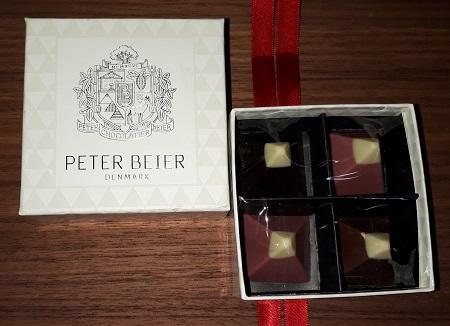
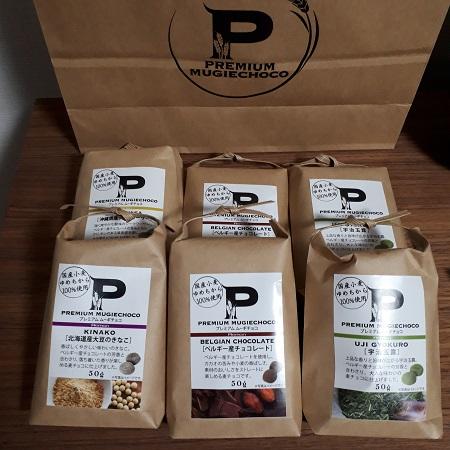 Many other brands, a variety of ways of enjoying, taste, sight, smell, hearing, and touch are elaborated enough to mobilize as much as possible, and the more you know, the deeper you notice.
Many other brands, a variety of ways of enjoying, taste, sight, smell, hearing, and touch are elaborated enough to mobilize as much as possible, and the more you know, the deeper you notice.![]() .
.











































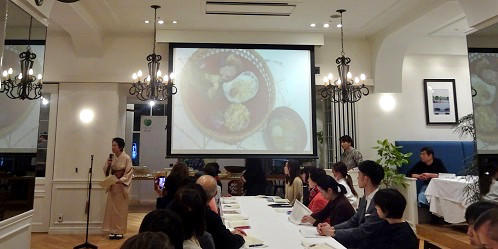
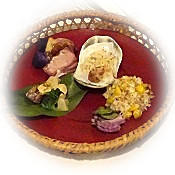
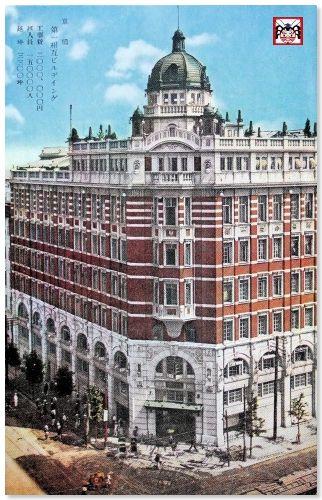
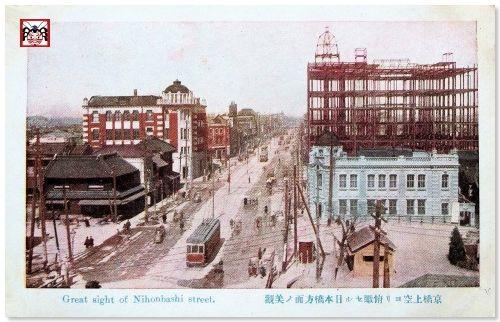
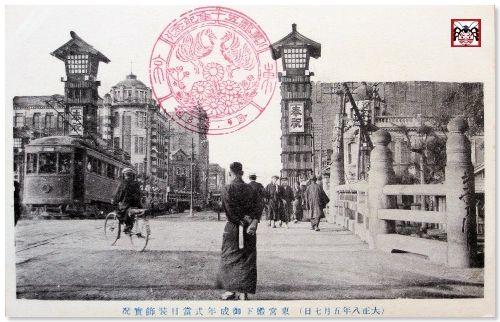
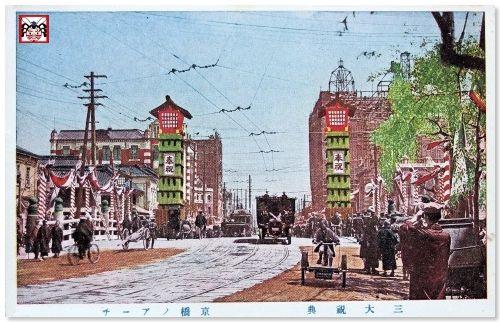
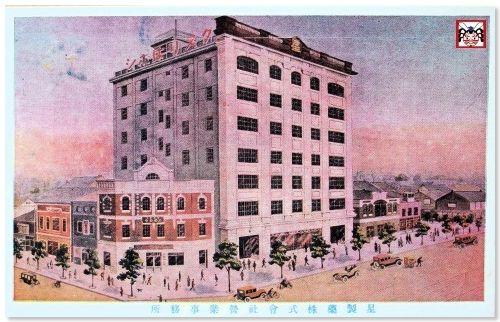 This building was built diagonally opposite the first mutual building under construction. From the Ginza side, it is characterized by the shape of a window close to a square, and after this, it often appears in the landscape of postcards. On the rooftop, the signboard "Kusuri wa Hoshi" glowed in red letters.
This building was built diagonally opposite the first mutual building under construction. From the Ginza side, it is characterized by the shape of a window close to a square, and after this, it often appears in the landscape of postcards. On the rooftop, the signboard "Kusuri wa Hoshi" glowed in red letters.